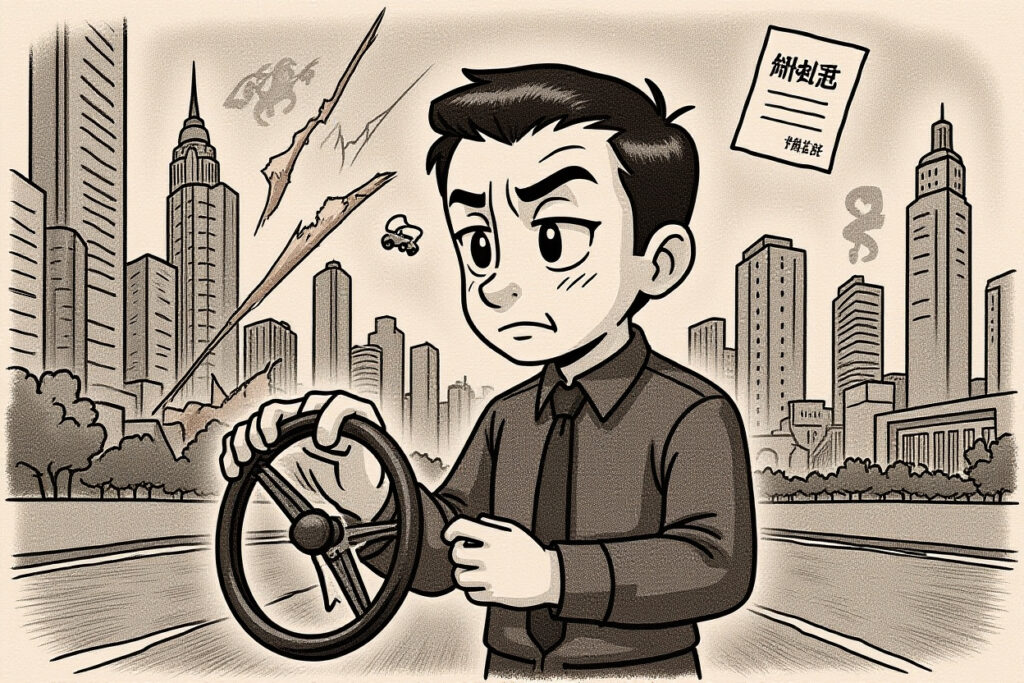Market Paradox: Record Transactions Mask Deepening Industry Crisis
The used car market in China presents a fascinating paradox in 2024. While transaction volumes reach historic highs, profitability has evaporated for the majority of market participants. This divergence between surface-level metrics and underlying financial reality represents one of the most significant structural shifts in China’s automotive industry in decades.
According to data from the China Automobile Dealers Association (中国汽车流通协会), the national used vehicle transaction volume reached 19.6142 million units in 2024, representing year-on-year growth of 6.52%. The total transaction value exceeded 1.28 trillion yuan, setting new industry records for both key indicators. Yet beneath these impressive numbers lies a story of financial distress and operational challenges that threatens the very foundation of China’s used car ecosystem.
The Profitability Collapse
Industry insiders report that approximately 90% of used car dealers are currently operating at a loss. The average profit per vehicle has declined precipitously, forcing many established players to reconsider their business models entirely. This dramatic reversal of fortune comes after several years of exceptional profitability, creating whiplash throughout the industry.
As one seasoned Shanghai-based dealer explained, “The industry has completely transformed. Two years ago, we were making money effortlessly. Today, we’re fighting for survival with every transaction.” This sentiment echoes across dealerships nationwide, from major metropolitan showrooms to smaller regional operations.
The Price War Phenomenon: From Boom to Bust
The current crisis in China’s used car market finds its roots in the aggressive pricing strategies adopted by new vehicle manufacturers. As new car prices decline dramatically, the traditional price advantage of used vehicles has evaporated, creating a fundamental shift in consumer purchasing behavior.
Market analysis from Gasgoo Auto Research Institute (盖世汽车研究院) reveals the scale of this price reduction phenomenon. In 2024, more than 70 automotive brands reduced prices on over 330 models. The average price reduction for new energy vehicles reached 18,000 yuan, representing a 9.2% decrease from previous pricing. Conventional fuel vehicles saw average reductions of 13,000 yuan, equivalent to a 6.8% price decline.
Case Study: BMW 3 Series Depreciation
The impact on specific models illustrates the broader market trend. Industry expert Liaoran Fuping (了然浮萍), who transitioned from automotive journalism to used car operations, provides a concrete example: “The BMW 3 Series F35 model had an average price of 123,000 yuan two years ago. Today, the same vehicle sells for approximately 78,000 yuan.” This represents a depreciation of nearly 37% over a relatively short period, significantly exceeding historical norms for premium German vehicles.
The compression of used vehicle values has been particularly severe for models that previously enjoyed strong residual values. The rapid depreciation has created financial hardship for consumers who purchased vehicles at market peaks, with many facing negative equity situations where their outstanding loan balances exceed current vehicle values.
Structural Shifts: Understanding the Underlying Drivers
Multiple factors have converged to create the current challenging environment for used car operations. The convergence of new vehicle pricing strategies, changing consumer preferences, and broader economic conditions has created a perfect storm that has fundamentally altered market dynamics.
The core issue, as identified by industry participants, stems from the disconnect between acquisition costs and selling prices. Dealers purchased inventory at prices reflective of previous market conditions, only to find that new vehicle price reductions undermined their ability to sell these vehicles profitably. This squeeze on margins has been exacerbated by changing consumer attitudes toward used vehicle purchases.
Consumer Psychology Shift
Liaoran Fuping observes that “buyer psychology has changed significantly. Consumers now question why they should pay premium prices for used vehicles when new alternatives are available at similar or lower price points.” This mental shift represents perhaps the most significant long-term challenge for used car dealers, as it may persist even if new vehicle prices stabilize.
The traditional advantages of used vehicles – primarily lower acquisition costs – have been largely neutralized by manufacturer discounting. Meanwhile, the inherent disadvantages of used vehicles, including uncertain maintenance histories, limited warranties, and the potential for hidden issues, remain significant barriers to purchase.
Export Markets: Emerging Opportunity or Temporary Relief?
Faced with challenging domestic market conditions, many industry participants have turned their attention to export opportunities. Since China launched its used car export pilot program in 2019, overseas shipments have grown dramatically from just 4,300 units in 2020 to over 436,000 units in 2024.
Export markets now span more than 160 countries and regions, including Southeast Asia, the Middle East, Europe, and Latin America. Projections suggest exports could exceed 1 million units by 2025, representing a potential lifeline for struggling domestic operators.
Regional Market Dynamics
The export market has shown particular strength in certain regions. Russia and neighboring countries initially represented strong demand centers, with some exporters reporting that “they could sell every vehicle they could source” to these markets. However, geopolitical developments and changing import regulations have introduced volatility into these relationships.
As Liaoran Fuping notes, “Export markets primarily focused on Ukraine, Russia, and other developing economies. But profitability has diminished as specific regional needs have evolved.” The temporary nature of certain export opportunities has led some industry observers to characterize them as “short-term supplementation” rather than sustainable long-term strategies.
Quality and Certification Challenges
Export operations face significant hurdles related to vehicle certification and quality assurance. Each vehicle requires comprehensive inspection across multiple dimensions including:– Body quality and structural integrity– Battery health status (for electric vehicles)– Operational systems and modules– Static data verification– Charging system functionality (for EVs)
These requirements add cost and complexity to export operations, reducing already thin margins. Additionally, the establishment of reliable after-sales service networks in destination markets remains a significant challenge that limits customer confidence and purchase willingness.
Industry Transformation: Path Forward Through Value Creation
The current market difficulties, while painful for individual operators, may ultimately drive necessary industry evolution. The era of easy profits through information asymmetry appears to be ending, replaced by a more mature market requiring professional operations and transparent business practices.
Industry participants increasingly recognize that survival depends on transitioning from price competition to value creation. This shift requires fundamental changes in business models, with successful operators focusing on building trust, improving service quality, and enhancing customer experiences.
Building Sustainable Business Models
The transformation mirrors similar developments in other industries that have matured from chaotic early stages to more structured ecosystems. As Liaoran Fuping observes, “This is a consolidation process that inevitably involves pain and adjustment. Those who focus on service and quality can survive – similar to what we’ve seen in real estate.”
This perspective suggests that China’s automotive market may finally be entering its first true normalization phase after decades of expansion. The transition from growth-focused to efficiency-focused operations represents a maturing market that may ultimately benefit both consumers and sustainable businesses.
Strategic Imperatives for Market Participants
Surviving the current market transition requires strategic adaptation across multiple dimensions. Successful operators will likely need to address several key areas to navigate the challenging environment and position themselves for future success.
Critical focus areas include:– Developing transparent pricing and vehicle history reporting– Implementing comprehensive quality inspection and certification processes– Building stronger digital capabilities for inventory management and customer acquisition– Creating enhanced warranty and after-sales service offerings– Diversifying revenue streams through financing, insurance, and value-added services
Data-Driven Operations
The increasing availability of market data and analytical tools provides opportunities for more sophisticated inventory management and pricing strategies. Operators who leverage these resources effectively can make better purchasing decisions and optimize their inventory turnover, reducing exposure to depreciation risk.
Platforms that provide real-time market pricing, vehicle history reports, and demand forecasting have become essential tools for successful operations. The integration of these resources into daily business processes represents a significant competitive advantage in the current market environment.
Future Outlook: Navigating the New Normal
The Chinese used car market stands at a critical inflection point. The industry must transition from its historical dependence on market inefficiencies and rapid growth to a more sustainable model based on operational excellence and customer value creation.
While the current adjustment period involves significant pain for market participants, it may ultimately produce a healthier, more transparent industry ecosystem. Consumers stand to benefit from improved information availability, better service standards, and more competitive pricing structures.
International observers should monitor several key indicators to gauge market evolution:– Stabilization of new vehicle pricing and production levels– Development of standardized vehicle certification and valuation frameworks– Expansion of reliable export channels with sustainable profitability– Emergence of consolidated operators with national scale and professional management
The transformation of China’s used car market represents a microcosm of the broader maturation of the country’s consumer economy. As in other sectors, the transition from quantity-focused growth to quality-focused development creates both challenges and opportunities for market participants.
Industry stakeholders should prepare for continued volatility in the near term while positioning for long-term structural changes. The companies that survive the current consolidation will likely emerge stronger, more efficient, and better positioned to serve China’s massive automotive market in its next phase of development.
For international investors and industry observers, understanding these dynamics provides crucial insight into one of the world’s most important automotive markets. The evolution of China’s used car sector will have implications for global manufacturers, parts suppliers, and financial institutions with exposure to the Chinese automotive ecosystem.




